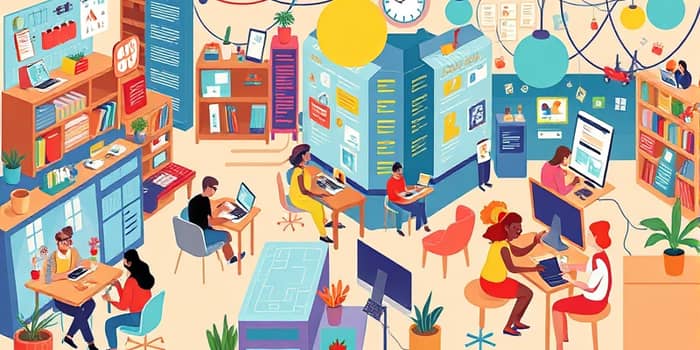
The global upheaval of the COVID-19 pandemic triggered profound changes in the way we live, work, shop, and relate to one another. While many of the immediate challenges have receded, a suite of new habits and systems has taken root. Far from temporary adaptations, these trends have reshaped society and business, cementing a new normal that will inform our collective future.
In this article, we explore the most enduring pandemic-era shifts—from remote work to digital commerce, automation to societal impacts—and provide practical insight into thriving amid these transformations.
The landscape of work has been fundamentally altered. Once an extraordinary accommodation, remote work is now part of the standard playbook.
Before the pandemic, the average U.S. worker logged 2.4 days per month working from home. At the height of lockdown, that soared to 5.8 days, and today it stabilizes at 3.8 days—still well above pre-pandemic levels. Roughly half of U.S. employees have telecommuted at least once, compared to just 9% in 1995.
Contrary to early fears, remote work has boosted overall productivity. Industry data shows a 14.9-point rise in remote workers correlated with a 1.2-point increase in total factor productivity (TFP) from 2019–21. Surveys reveal that 38% of workers now perform some or all duties at home, averaging 5.6 hours, while 68% work onsite for 7.8 hours a day.
Demographically, Black workers are overrepresented among homeworkers (18% vs. 12% of the total workforce), while Asians comprise 7%. These shifts have prompted organizations to adopt flexible schedules and hybrid models, blending office presence with remote days.
Consumers have embraced digital channels at an unprecedented scale. E-commerce grew two to five times faster during the pandemic, and by 2025, it remains near its peak share of total retail. Three-quarters of users who adopted new digital services plan to stick with them.
In China alone, e-commerce, delivery, and social media jobs grew by over 5.1 million in early 2020, signaling a structural shift in labor demand.
While digital transformation unlocked efficiency and convenience, it also exacerbated existing divides. Inequality has widened, and job precarity is on the rise as automation displaces routine roles.
Surveys reveal that 47% of people believe life will be worse in 2025 compared to before the pandemic, while 39% think it will be better—a clear indicator of a polarized public outlook.
Our routines have been permanently rewritten. Virtual social gatherings, online fitness classes, and remote worship services are no longer novelties but key pillars of community life.
Traditional public interaction—dinners out, in-person conferences, neighborhood events—has declined, replaced by digital alternatives that offer convenience but can deepen social isolation.
Yet digital interconnectedness has also enabled remarkable global empathy and coordinated public action, from crowdfunding relief efforts to virtual activism.
Businesses accelerated automation and AI deployment to maintain continuity and mitigate labor shortages. While these technologies enhance some roles, they also displace workers in routine positions.
Employers increasingly outsource tasks globally, leveraging a gig economy workforce and deploying surveillance tools to monitor remote performance. Meanwhile, videoconferencing has reduced demand for business travel—up to 20% may never return—which disrupts industries such as commercial aviation and hospitality.
To navigate these enduring trends, individuals and organizations can take proactive steps:
Organizations should design inclusive policies that address inequities, invest in employee well-being, and leverage data to refine remote and hybrid models continually.
The pandemic did more than force temporary change—it accelerated trends that were already in motion. Remote work, digital commerce, and automation were on the horizon, but the crisis propelled them into the mainstream. Now, these trends are permanent fixtures in our economy and society.
Accepting and adapting to this new paradigm empowers us to unlock productivity gains, broaden access to services, and create more flexible, resilient communities. But we must also confront the challenges of inequality, privacy, and mental health head-on.
By championing inclusive policies, prioritizing well-being, and harnessing the power of technology responsibly, we can shape a future that retains the best innovations of the pandemic era while mitigating its risks.
The trends set in motion over the past few years are not fleeting—they are the foundation of our post-pandemic world. Embrace them thoughtfully, and you will find opportunities to thrive in the ever-evolving landscape ahead.
References













